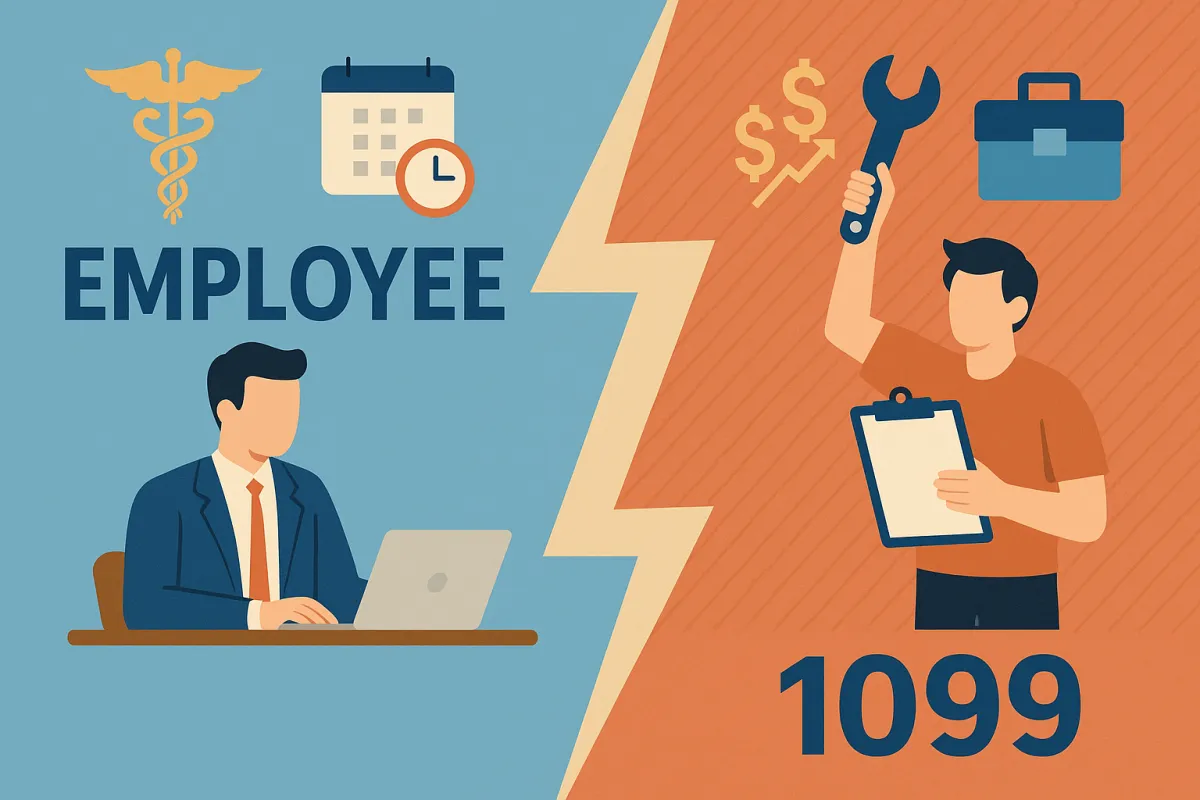
1099s vs. W-2s
The Truth About 1099s vs. W-2s: What Business Owners Need to Know
In this episode of The PEO Playbook, Chad Philly of Staff Brokers dives into one of the most commonly misunderstood and dangerously misused topics in small business: the difference between 1099 independent contractors and W-2 employees.
"1099 Employee" Is Not a Real Thing
If you’ve ever referred to someone on your team as a "1099 employee," you’re already in risky territory. There is no such thing. A worker is either an employee (W-2) or an independent contractor (1099).
The core difference lies in control:
If you dictate how, when, and where they work, they’re a W-2.
If you simply assign a task and they determine the details, they might be a 1099.
Key Factors in Proper Classification
The IRS looks at several factors, but Chad breaks them down into three main buckets:
Behavioral Control: Are you directing their methods, tools, and schedules?
Financial Control: Are you supplying tools and materials? Are they paid hourly?
Relationship: Is the working relationship continuous, and do they rely solely on your business for income?
If your answer is "yes" to any of those, odds are you're dealing with a W-2 employee and misclassifying them as a 1099 could result in:
Tax penalties
Workers' comp exposure
Legal liability if they get hurt
The Illusion of Savings
Why do so many businesses take the risk? Because paying someone as a 1099 usually saves about 25–30% in taxes and benefit costs. But when a misclassified worker gets injured or files a claim, those savings disappear in a hurry.
Chad emphasizes that benefits are a huge red flag. If you’re offering insurance, retirement contributions, or other perks to someone you’re classifying as a 1099, you’re asking for trouble.
The Cultural Cost
Beyond the legal and financial implications, there’s also a cultural cost. 1099 contractors are usually left out of team training and culture, which can cause disconnect, poor communication, and ultimately lower quality work.
How to Protect Yourself
Always pay 1099s to a registered business entity, not an individual SSN.
Keep documentation on file that defines the scope of the project.
Use the IRS 20-factor test or consult a PEO to verify classification.
If you control the process, materials, schedule, and training, you have an employee not a contractor.
Need help making sure you’re classifying workers correctly? 👉Visit PEOPlaybook.com/BookNow
